I often find that when I wander on my own, I can submerge myself into the culture of Morocco and can fully appreciate the beauty and people around me. Some of my friends race off to wherever they want to go as fast as possible, with minimal interaction with anyone besides each other. I, on the other hand, am a wanderer. While exploring new cafes and restaurants is a large part of the Moroccan lifestyle, I feel as if interacting with the people is the only way fully to experience its culture.
Many times when I want to explore, I visit the Medina with my camera hung around my neck as it bounces against my abdomen with each downward step toward my destination. I start with familiar places and, little by little, venture farther, adding new streets and landmarks to my internal compass. On this particular day, I wanted to explore more of the Kasbah.
Through the Grand Socco, I began trekking up the steep hill toward my favorite cafe, Salon Bleu. Past the wall with the mural of Bob Marley, I was intrigued by the faint sound of clinking from inside a pottery shop. I entered the small shop with hand-painted pottery lining the walls, and noticed two men making elaborate tiles known as “zellij.” I motioned to my camera and then to their work, asking their permission to take some pictures. One of the men nodded, permitting me, and he then proceeded to show me how he chipped away at the tile block to produce a geometric figure. He motioned me to sit, clearing a spot for me on the ground. He began another piece on a small white painted square. He wore a red and white striped sweater with the word “sports” patched onto his right shoulder, with an old jean jacket draped over his lap as he worked to collect the dust. After several clinks and smoothing of the edges, he outstretched his arm, and with a smile pinching dimples into his slender face, he held out the tile, now in the shape of a heart.
Without speaking a lick of English, we devised a communication system combining the little Arabic I knew with charades. He motioned to his workbench and, through repetitive phrases and hand gestures, showed me the process of making zellij tiles. I tested out my Arabic by telling him I am an American student studying in Tangier. Impressed with my Arabic, he began speaking as if I would understand. From the look of confusion on my face, I must have figured out that I did not comprehend.
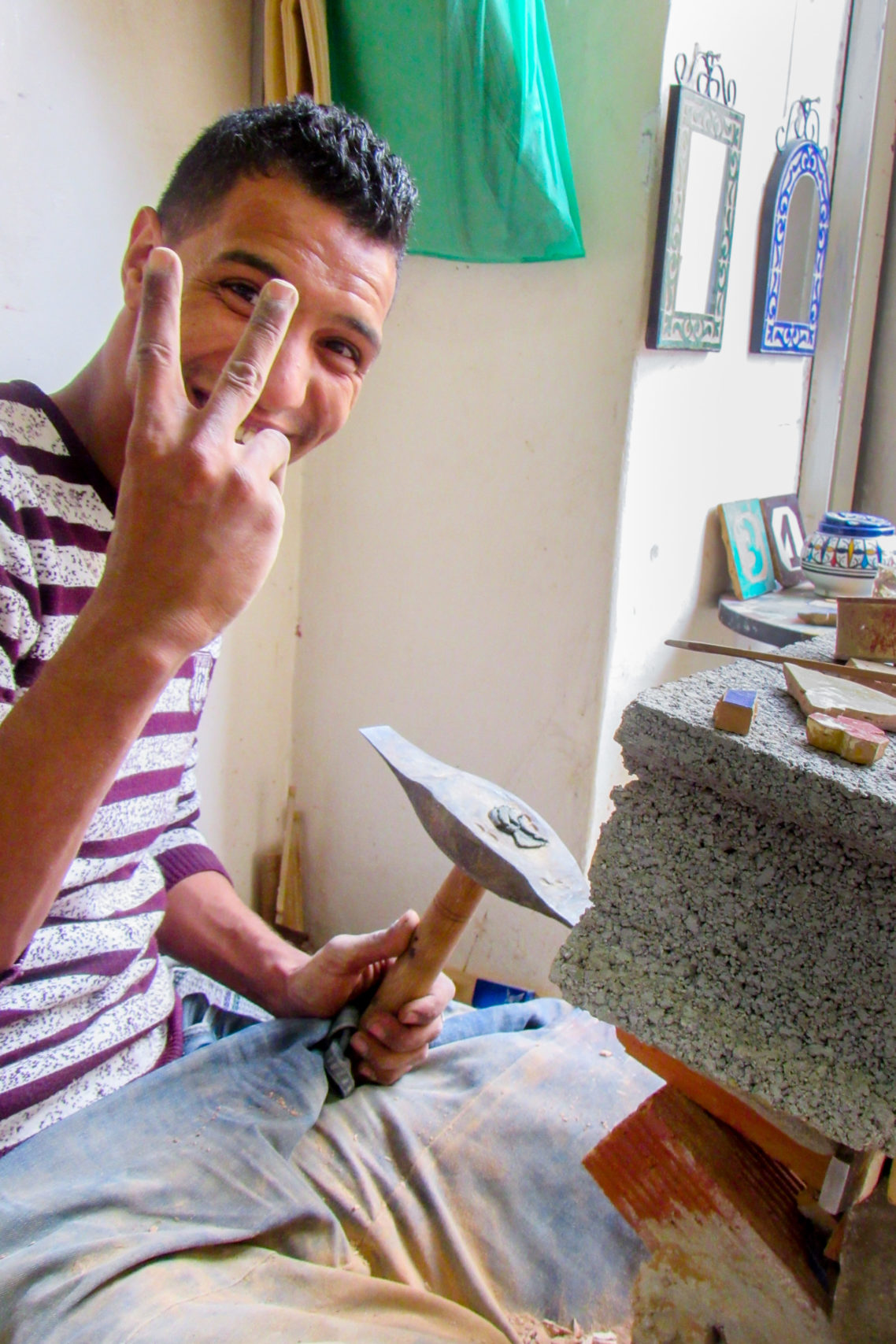
I asked him his name, and he said “Smiti Driss.”
U nti?” he asked.
“Hannah,” I replied and pointed to my hand tracing it with my finger. “Like henna,” I said.
He asked for the carved heart back by forming his fingers in the shape of a heart. “Smiti,” he said pointing to the heart and handing me a small wooden stick and blood red gelatin paint. I took the stick and paint and began writing my name in block letters on the tile. Driss tapped my jeans and pointed to the paint to warn me that the color would not come out if I got it on my clothes. Once I finished writing my name, I handed the heart back to him. He examined it and then began to work on it again, tapping it with a straight-edged chisel. After a couple of minutes, he handed it back to me with my name carved into the heart.
I sat in that little two-person workshop for over an hour and a half watching him chip away at tiles to make various shapes, while his friend worked silently assembling tiles to a tabletop. A group of tourists speaking Spanish came into the shop. He glanced over at me and rolled his eyes as if to say, “Oh God” before putting on a smile to greet the group and show them his ceramic products. After the group s left, I got up myself to say goodbye to my new friend. He gestured to a chair motioning me to sit in it, and I pointed outside trying to convey that I needed to leave.
“Goodbye, Hannah,” he said, not with words, but with gestures.
“Goodbye, Driss.”
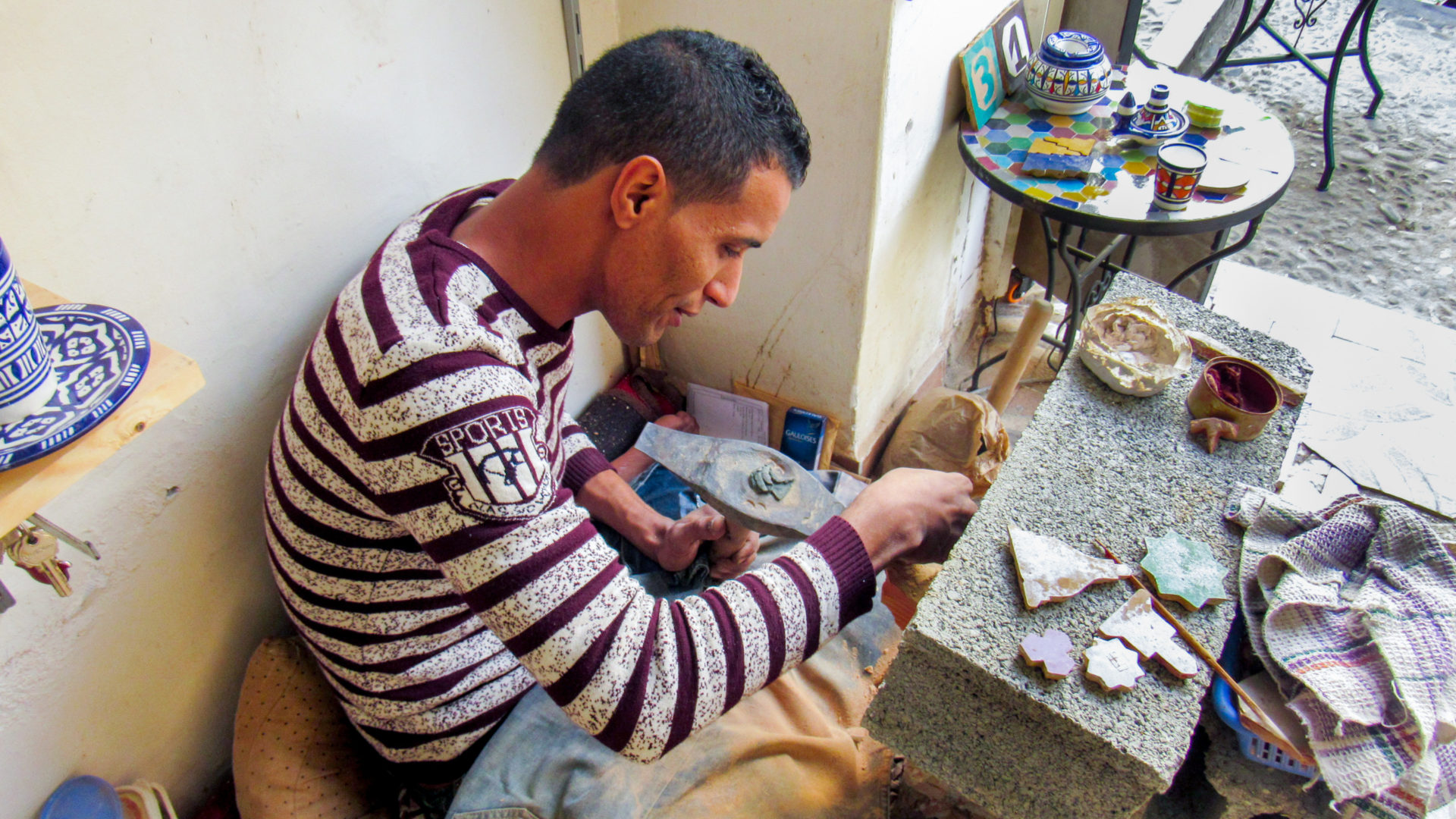
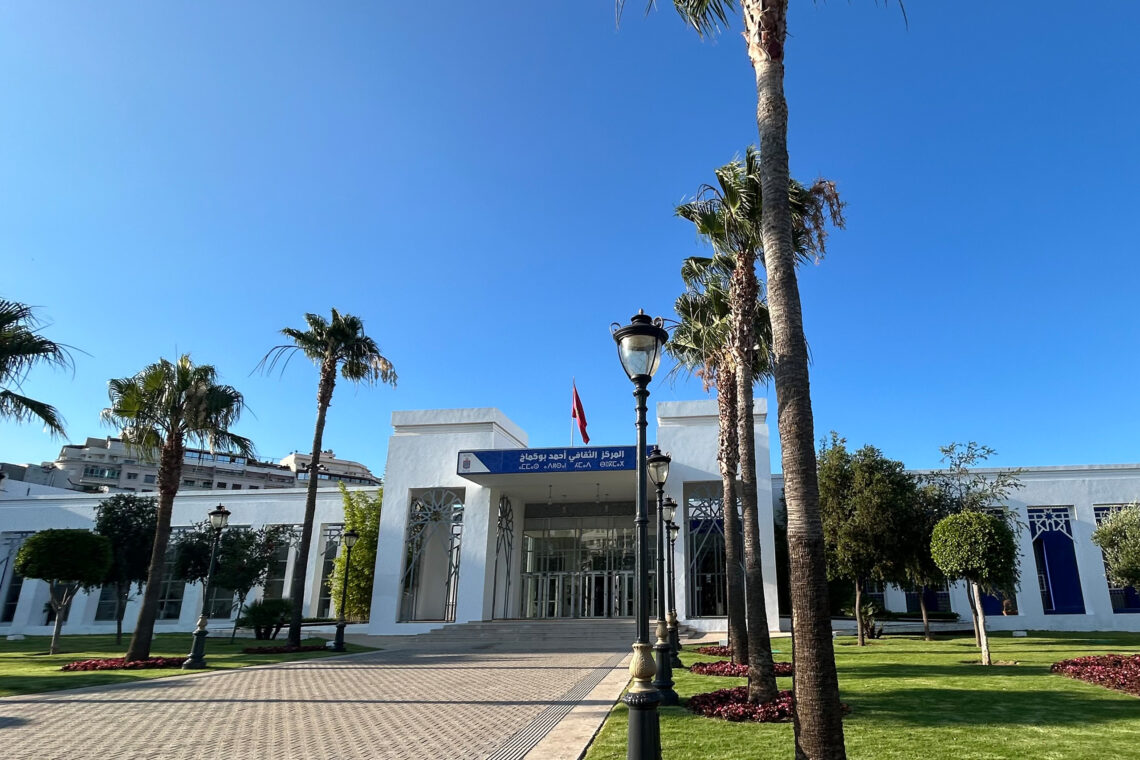
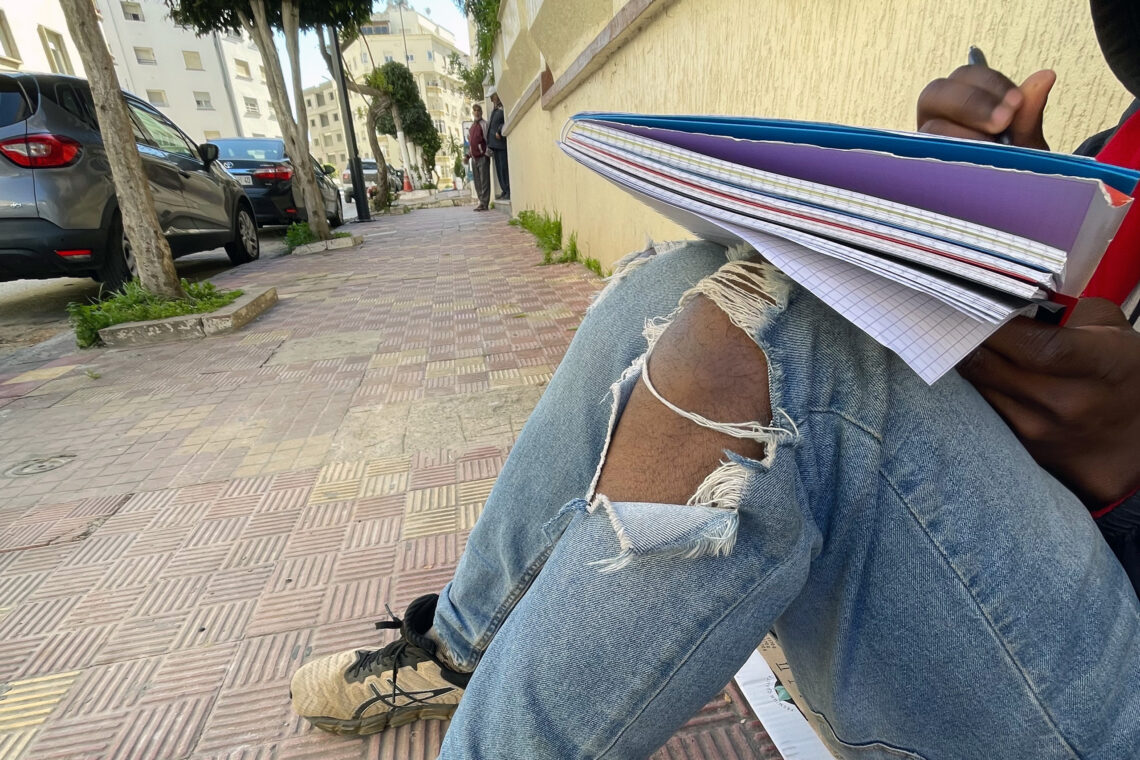
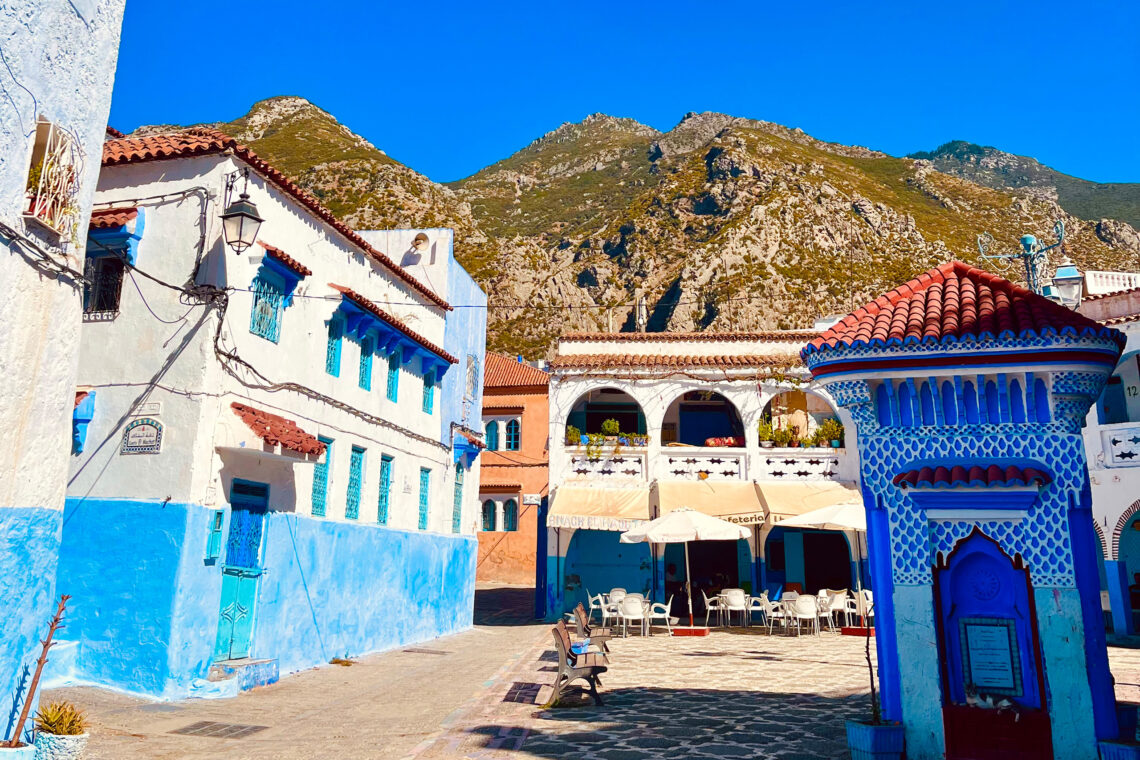
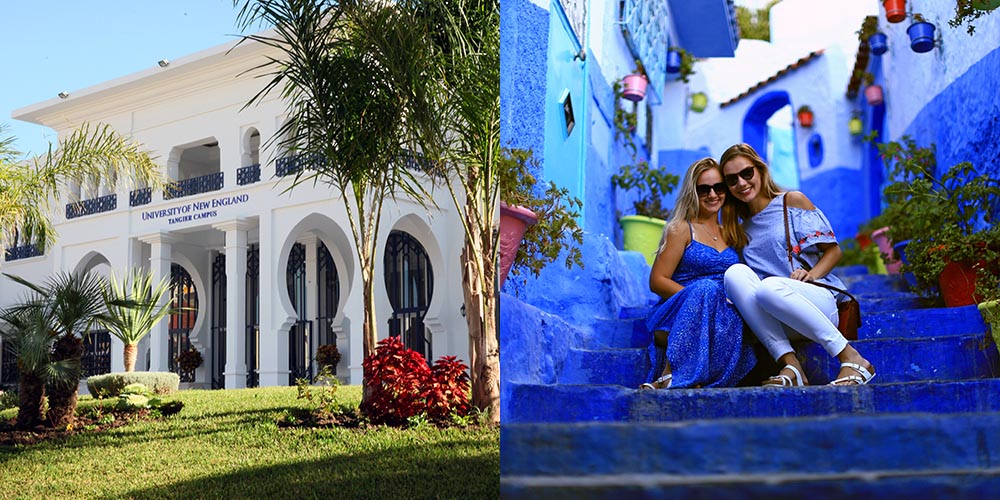

Comments are moderated by the editor and may not appear on this discussion until they have been reviewed and deemed appropriate for posting. All information collected is handled in a manner consistent with our privacy policy.